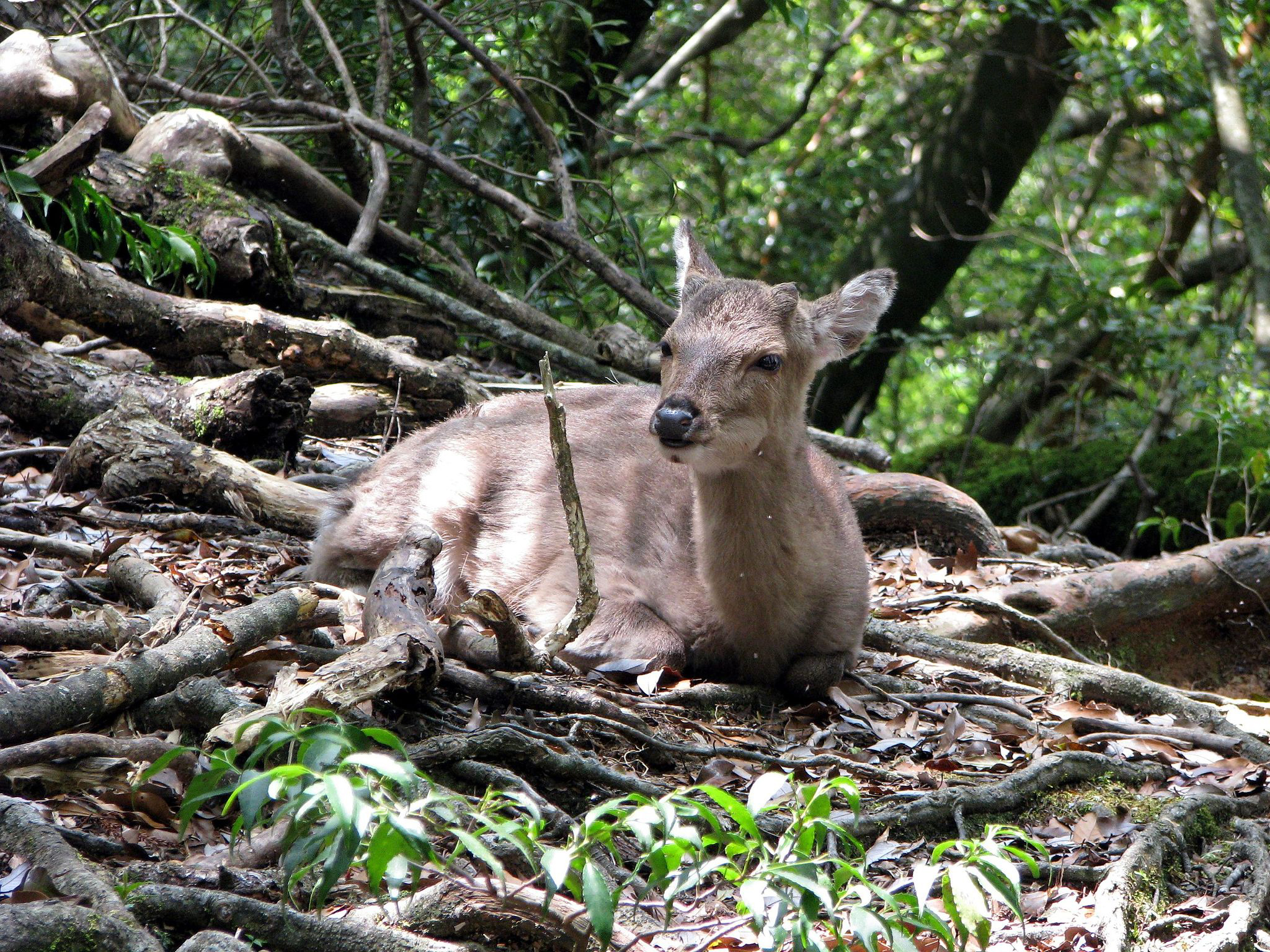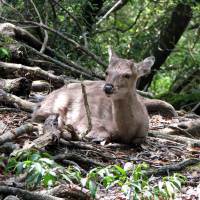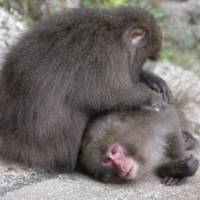In the 1980s, when I was living in northern Nagano Prefecture and hiking the mountains with members of the local Hunters Association, I was always making a lot of fuss about the depredation of ancient forests being instigated by the Forestry Agency — a branch of the national government that, at the time, had an independent budget and financed itself from the sale of timber. Of course, ancient timber was the most valuable, and although about 67 percent of Japan is covered with trees, less than 3 percent is old forest.
Before long, urged on by several of those hunters, I began to speak out publicly about the destruction of ancient forests and the consequent loss of biodiversity and increased risk of flash floods and landslides.
I would also point out the growing problem of bears raiding fields and orchards because the agency was felling ancient woodlands with well over 100 species of trees that were rich in natural food for the bears — then replanting them exclusively with fast-growing but nutritionally useless native Cryptomeria japonica conifers, also known as Cupressus japonica — known as sugi in Japanese, and Japanese cedars or Japanese red cedars in English.
To add insult to injury, in order to facilitate the rape of old forests, roads were being constructed to allow the passage of heavy machinery and trucks that could haul out the timber. Then when logging finished, those roads were being used, quite illegally — but with no control — by truckers taking loads of industrial and medical waste to dump in ravines and thinly cover with soil.
And all of this, mind you, carried out in watershed areas prone to rapid soil erosion and the risk of toxins getting into drinking water sources.
So, urged on by locals, I raised all hell.
Now, it wasn't until 1995 that I became a Japanese citizen, and in many other countries back in the '80s, a foreign national criticizing the government so forcefully might expect a knock on the door in the night followed by deportation or even their "disappearance" — while in more moderate states they'd perhaps be asked to leave or have their visa terminated.
However, one of the greatest things about Japan, in my opinion, is freedom of speech — and so it was that I was neither terminated nor turfed out — but instead became a regular on nationwide television!
That was in the good old days when people still wrote on paper, and I would receive mail from all over the country. One of the letters I remember getting was from a group of citizens concerned about the cutting of ancient cedars on Yaku Island.
Yakushima, as that outpost of Kagoshima Prefecture about 60 km off the southernmost tip of Kyushu is known in Japanese, rises to 1,935 meters at the summit of Mount Miyanoura, which is the highest mountain in Kyushu.
In winter the peak is often covered with snow, with the result that on Yakushima you can be in magnificent snow country, then hike down to a hot spring and then dive into a coral sea — all in one day.
In 1985, I went with a TV company to make a documentary about what might be the oldest living tree on Earth, the so-called Jomon sugi — a Japanese cedar that some estimate to be over 7,000 years old.
In recent years, some of the tree's branches have fallen under the weight of snow, and counting their annual rings showed that even they were more than 2,000 years old. At just over 25 meters high and with a circumference of 16.4 meters, the tree is named after the Jomon Period of prehistoric Japan that extended from around 14,000 years ago until 300 B.C., and whose peoples are now best known for their beautiful cord-pattern pottery.
Well, with that TV crew we took our time hiking up to see the tree, which grows on the north face of Mt. Miyanoura at 1,300 meters above sea level. This is an area where any cedar under 1,000 years old is called a "kosugi," meaning "child cedar."
When we finally reached and filmed the tree, I imagined that I could see an ancient face in the trunk, and my reaction — in Japanese — was to feel that this was no mere tree, but a deity. If I was to believe what the experts told me, that still living specimen was already growing before the birth of Christ — even before the Pyramids were built.
After we'd filmed the tree, our guides took us to see the continuing destruction of that old forest. We crossed steep slopes on which the ancient trees had been totally destroyed by rocks tumbling down from the increasingly unstable slopes.
Hence, with that, there began a few years of my joining the campaign to save the remnants of the ancient cedar forest, and to get Japan to join the UNESCO World Heritage community. That was when I began to spend more and more time sitting on committees, all in Japanese, and arguing about forests, wildlife and water conservation. At the same time, I was pushing for the establishment of a technical college, which could train people to become competent national park rangers, eco-tourism guides and research fieldworkers in environmental assessment.
Yakushima became Japan's first UNESCO natural heritage site in 1993, with 21 percent of the island now protected, including an unbroken slope of forest that goes from the coastal subtropical zone, through montane temperate rain forest and on up to high moors and cold temperate grassland.
Meanwhile, in 1995 the first intake of students was enrolled into the new college, which is now called the Tokyo Environmental Technical College — although I far prefer its original name, which was the Nature Conservation College.
From the very beginning, its students have always done their first-year fieldwork training up here where I live in Kurohime, Nagano Prefecture, and their second-year fieldwork training on Yakushima. Now about 20 of our graduates live and work on Yakushima. I am now the honorary president of the college.
Yakushima is also home to a subspecies of small shika deer weighing 19 to 37 kilograms. as adults, whereas those in Nagano and throughout the mainland typically tip the scales at 49 to 80 kilograms.
In 2014, the population on the island was estimated at around 19,000. With no natural predators, their numbers have increased so much that you can see the effect the animals are having on ground vegetation. However, facilities for the hygienic butchering of deer were built on the island in 2014, and now about 4,000 are culled each year, with venison on the menu of many restaurants and hotels.
In recent years, the deer have formed a special relationship with the Yaku macaques (Macaca fuscata yakui), which are also much smaller than their mainland cousins. They have thick grey coats and black hands and feet and live in very close matriarchal groups of up to 50 individuals. It is estimated that between 6,000 and 8,000 of these monkeys live on the island, and if you drive, hike or cycle around you can't miss them. The Yaku macaques are very aggressive to other groups, but they have formed a close relationship with the deer.
Research has indicated that the deer are drawn to monkey chatter when the macaques are feeding in the trees because they drop leaves and fruit that the deer can feed on.
On a recent visit, I saw deer traveling with the monkeys on the ground, and I have also seen footage of young monkeys playing with the deer — even trying to ride them.
In fact, Yakushima's deer and macaques tolerate each other and share in a way that I do so wish we humans could emulate.





